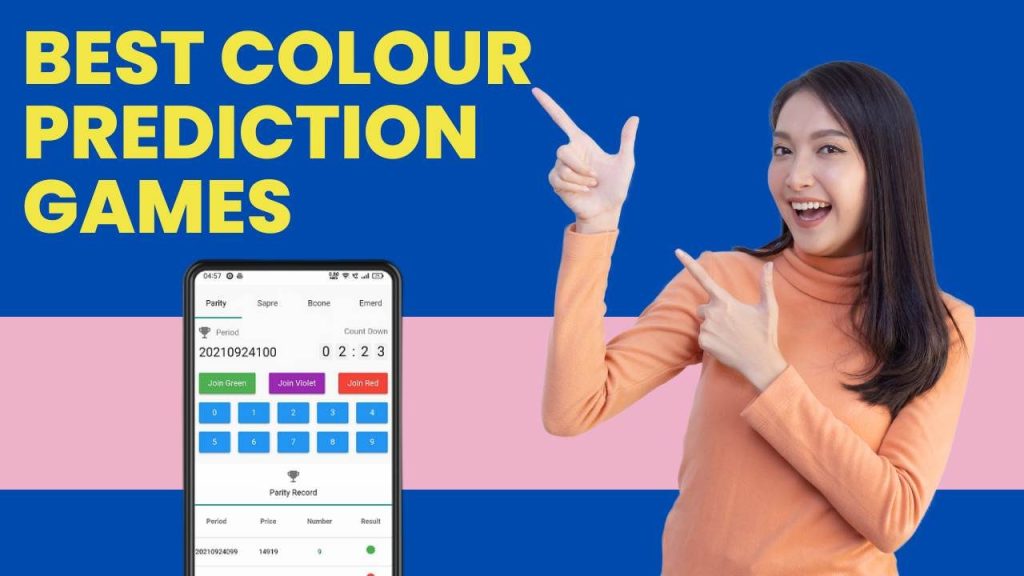
In the dynamic world of online gaming, where visual appeal plays a pivotal role in capturing players’ attention, color prediction games are a genre that thrives on the synergy of aesthetics and simplicity. This article delves into the design elements that contribute to the success of color prediction games, examining how developers leverage visual appeal to create immersive and engaging gaming experiences that captivate a diverse global audience.
Vibrant Color Schemes:
a. Attention-grabbing hues: Successful color prediction games often feature vibrant and attention-grabbing color schemes. Bold and contrasting hues enhance the visibility of predictions, ensuring that players can easily distinguish between different colors.
b. Psychological Impact: Developers leverage the psychological impact of colors to evoke specific emotions. Reds may convey excitement and intensity, while blues evoke a sense of calm. Understanding these color psychology principles enhances the overall gaming experience.
Dynamic Visual Animations:
a. Engaging Animations: Dynamic visual animations bring color prediction games to life. From the anticipation of the color reveal to celebratory animations for correct predictions, engaging visual sequences add a layer of excitement and interactivity.
b. Responsive Feedback: Visual animations provide feedback to players’ actions, creating a dynamic and immersive environment. Well-timed animations contribute to the game’s overall flow, maintaining player engagement.
Intuitive User Interface (UI):
a. User-Friendly Design: A successful color prediction game features an intuitive and user-friendly interface. The UI should be streamlined, allowing players to make predictions and navigate the game effortlessly.
b. Clear Instructions: Clear and concise instructions improve the user experience. Visual cues and tooltips guide players through the game play, ensuring the mechanics are easily understood.
Adaptive Difficulty Levels:
a. Gradual Complexity: Successful color prediction games incorporate adaptive difficulty levels. As players progress, the complexity of predictions may increase gradually. This adaptive approach ensures that novice and experienced players find the game challenging and enjoyable.
b. Dynamic Challenges: Developers introduce dynamic challenges that evolve based on player performance. The ability to continually present players with new and exciting challenges maintains their interest and engagement.
Strategic Use of Visual Contrast:
a. High-Contrast Designs: Visual contrast is strategically employed to enhance the visibility of color options. High-contrast designs allow players to discern between colors, facilitating swift and accurate predictions quickly.
b. Enhancing Decision-Making: The strategic use of visual contrast contributes to the overall decision-making process. Players can make informed predictions in a fraction of a second, adding an element of skill to the game.
Aesthetic Customization Options:
a. Player Personalization: Successful color prediction games on 91 club login often include aesthetic customization options. Allowing players to personalize the visual elements, such as choosing color themes or backgrounds, enhances the sense of ownership and connection to the game.
b. Tailoring the Experience: Customization options cater to diverse player preferences, ensuring that the aesthetic experience aligns with individual tastes. This tailoring of the gaming experience contributes to player satisfaction and loyalty.
Adherence to Cultural Sensitivities:
a. Cultural Considerations: Developers recognize the importance of cultural sensitivities in design elements. Aesthetic choices, including color symbolism, may be adapted to align with cultural preferences and avoid unintentional cultural misunderstandings.
b. Inclusive Designs: Aesthetic inclusivity ensures that players from different cultural backgrounds feel represented and welcomed within the game. Culturally sensitive design elements contribute to a more inclusive gaming experience.
Visual Storytelling Elements:
a. Narrative Integration: Some successful color prediction games integrate visual storytelling elements. Whether through thematic backgrounds, character animations, or storyline progression, these elements add depth to the gaming experience, making it more engaging and memorable.
b. Immersive Narratives: Visual storytelling fosters a connection between players and the game world. Immersive narratives create a more compelling and emotionally resonant gaming journey.
Conclusion:
The success of color prediction games hinges on the meticulous integration of aesthetic design elements that captivate players from diverse backgrounds. From vibrant color schemes and dynamic animations to user-friendly interfaces and adaptive difficulty levels, each design element contributes to the overall appeal of these games. As developers continue to innovate and refine their approaches, the harmonious blend of aesthetics and functionality will remain a driving force in shaping the success of color prediction games in the ever-evolving landscape of online gaming.